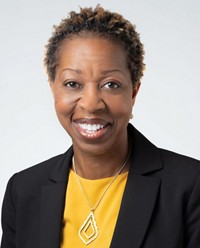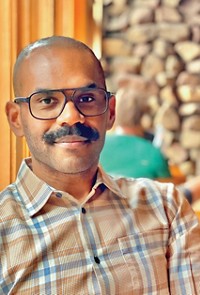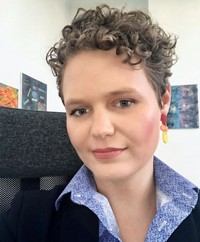×
CEN's 2020 Trailblazers
Paula Hammond: Drug delivery pioneer
Oluwatoyin "Toyin" Asojo: Rare-disease drug hunter
Laura Dassama: Sickle cell fighter
Cordell Hardy: Industrial innovator
Vernon Morris: Atmosphere investigator
Isiah Warner: Materials maestro and mentor
Malika Jeffries-EL: Semiconductor materials maven
Squire Booker: Catalysis champion
Jamel Ali & Patrick Ymele-Leki: Biofilm-busting duo
Carl Bonner: Jack of all chemistries
Cato Laurencin: Tissue regenerator
Kristala Prather: Synthesis warrior
Samson Jenekhe: Polymer powerhouse
Davita Watkins: Supramolecular chemistry sleuth
Karen Akinsanya: Strategic drug discoverer
Lynden Archer: Entrepreneurial educator
Etosha Cave: CO2 converter
Kimberly Jackson: Cancer slayer
Thomas Epps & LaShanda Korley: Upcycling champions
Sherine Obare: Interdisciplinary icon
Historical profiles
Contributors
C&EN's 2020 Trailblazers Celebrating badass women entrepreneurs in chemistry
Advertisement
Grab your lab coat. Let's get started
Welcome!
Welcome!
Create an account below to get 6 C&EN articles per month, receive newsletters and more - all free.
It seems this is your first time logging in online. Please enter the following information to continue.
As an ACS member you automatically get access to this site. All we need is few more details to create your reading experience.
Not you? Sign in with a different account.
Not you? Sign in with a different account.
ERROR 1
ERROR 1
ERROR 2
ERROR 2
ERROR 2
ERROR 2
ERROR 2
Password and Confirm password must match.
If you have an ACS member number, please enter it here so we can link this account to your membership. (optional)
ERROR 2
ACS values your privacy. By submitting your information, you are gaining access to C&EN and subscribing to our weekly newsletter. We use the information you provide to make your reading experience better, and we will never sell your data to third party members.
Synthesis
Movers And Shakers
One on one with Davita L. Watkins
Grad student Samantha Theresa Mensah talks with this supramolecular chemist about the collaborations central to her chemistry
by Samantha Theresa Mensah, special to C&EN
February 22, 2021
| A version of this story appeared in
Volume 99, Issue 6
Davita L. Watkins is manipulating complex systems to answer fundamental questions about self-assembly, putting materials to the test in different settings, including optoelectronic devices, bioimaging, and nanomedicine. She is the youngest of five and a first-generation PhD. Samantha Theresa Mensah spoke with Watkins about the power of collaborations. This interview has been edited for length and clarity.

Credit: Courtesy of Davita L. Watkins
Davita L. Watkins
Davita L. Watkins
Hometown: Memphis, Tennessee
Education: BS, Vanderbilt University, 2006; PhD, University of Memphis, 2012
Current position: Professor of chemistry and biochemistry, University of Mississippi
Favorite lab tool: As an organic chemist, I am expected to say a column, but I cannot go without a Büchner funnel with a fritted disk. Often my research involves products and materials with low solubility in organic solvents. I use them for purification, separations, isolation, etc. They are my quick and easy go-to glassware after a reaction.
Go-to stress reliever: I have noticed my hobbies change with every career level. As a graduate student, I had a professor who would take us rock climbing. As a postdoc, I fell in love with trail running. Now, as a principal investigator, I am always looking for the next hiking trail. I have even started getting my research group involved in my adventures.
Samantha Theresa Mensah: It seems like you’re going beyond optoelectronics applications and into a whole bunch of other really cool projects. Can you describe the materials you’re using and how you’re applying them?
Davita L. Watkins: I have a few research projects. One is a protein-based hydrogel study with Susan Pedigo to look at how we can modify protein backbones to make them stimuli responsive and bear drug molecules so they can treat inflammation in cases like arthritis.
We’ve also been working with St. Jude’s research hospital and Rhodes College on derivatives of the chemotherapy drug panobinostat for childhood multiple myeloma as well as neuroblastoma. This is a collaboration between three women.
In another case, we’re doing a lot of really interesting chemistry with conjugated polymers. We’re making them amphiphilic so they self-assemble into nanopolymers. Our goal is to be able to use them for near-infrared and short-wave IR bioimaging.
This next project is my beloved, the project that started my independent career. This project is based on halogen bonding, which is like the weird cousin of hydrogen bonding. You replace that hydrogen with a halogen and then you can take advantage of the σ-hole, an area of electron deficiency on your halogen that you can actually coordinate with nitrogens, oxygens, and sulfurs.
Lastly is our research on self-assembling block copolymers. I actually thought about this as a graduate student when I was taking a biomaterials course. These materials have really interesting architectures and properties. If you change the weight ratio between the two segments—one being hydrophilic, one being hydrophobic—you can actually form some really interesting nanoaggregates.
STM: Very cool. Can you talk a little bit more about your collaborations? They seem like a big part of your branching out, no pun intended.
DW: Through collaborations, we work with computational chemists for predicting the self-assembly and properties of our materials. We work with people who are based in bioimaging, molecular biologists who can help with the design strategy. Then, of course, we work with spectroscopists because we do a lot of imaging of conjugated materials. All of those questions can be answered collaboratively by having individuals who are interested in applying the skills they have.
DW: I was going to ask you about your research because I know you’re in materials chemistry, but I wanted to know exactly what part and what you are interested in.
A lot of students have told me that I’m the first Black professor they’ve seen, or I’m the first Black female professor they’ve seen.
STM: For my graduate research, it’s been about developing implantable biosensors that can detect different neurochemicals and give us more information about how the brain communicates. We have tools to look at electrical firing in the brain, but we don’t know as much about chemical firing because we don’t have the tools to actually probe that sort of interaction at relevant time and space scales. So that’s where my lab steps in. We are developing the tools based on field-effect transistors.
DW: Nice.
STM: Yeah. Field-effect transistors functionalized with an aptamer—a ligand-binding nucleic acid—are superselective for a specific neurochemical. Part of my job is to make a multiplexed sensor and get several different aptamers for different small molecules on the same microsized sensor. It’s very difficult.
DW: Wow. That sounds really crazy and so much fun. I say that only because aptamer work is not easy, and on top of that you’re trying to make actual devices. You’re in the middle trying to make it work. I love that.
STM: Thank you.
STM: Who have been your main mentors, and how have they changed the trajectory of your career?
DW: A number of people pop up in my mind. My doctoral adviser, Tomoko Fujiwara, is a woman in STEM [science, technology, engineering, and mathematics]. My postdoc adviser, Ronald K. Castellano at the University of Florida, was really, really influential. He took a chance on me, and I appreciate that chance.
STM: Can you expand on Castellano’s taking a chance on you?
DW: As a graduate student I really was not confident. You’re dealing with a lot of impostor syndrome or you’re dealing with some of your fears and anxieties. He said, “I think I see some diamonds in the rough here.” He opened doors for me simply by saying, “You can actually do this.”
STM: What’s your mantra when you’re mentoring your own students?
DW: My mentoring skills have evolved a lot. They probably have gotten better in some areas and worse in others, right? But one of the things that Dr. Castellano told me, and I think he said it in passing, was, “Be kind.” I keep that with me because I think that STEM academia can be very critical. You’re constantly being bombarded with criticism when it comes to your research, when it comes to your science, the way you think, and everything else.
STM: That’s awesome. I think that sort of mimics my own mantra that I’ve tried to convey as a teaching assistant at UCLA. I hold myself to be the type of TA that I needed when I was an undergraduate student.
DW: I think I may have to steal that from you. Be the mentor that you wanted to have. I agree with that.
STM: Can you talk about the challenges you face being a woman in STEM?
DW: You still don’t see a lot of women in STEM. A lot of students have told me that I’m the first Black professor they’ve seen, or I’m the first Black female professor they’ve seen. That’s very shocking to them. What makes me want to protect a lot of my young women who are going into STEM is that you as a minority, and you as a woman, feel as if you have to prove you deserve to be in the room. I’m hoping that people will be inspired and know that there are actual Black women in STEM and they’re in Mississippi. They’re in the South and they’re doing hard-core research.

Credit: Courtesy of Samantha Theresa Mensah
Samantha Theresa Mensah is studying aptamer-based field-effect transistors with the goal of neurotransmitter detection in vivo. She is a cofounder of the #BlackinChem movement.
Samantha Theresa Mensah
Hometown: Weston, Florida
Education: BS, University of Central Florida, 2017
Current position: PhD candidate, materials chemistry, University of California, Los Angeles, working in the labs of Anne Andrews and Paul Weiss
Pets: I have two sphynx cats, named Ellie and Violet.
Fun project she’s been working on: I am learning how to build cosplay costumes.
Chemical & Engineering News
ISSN 0009-2347
Copyright © 2024 American Chemical Society





Join the conversation
Contact the reporter
Submit a Letter to the Editor for publication
Engage with us on Twitter